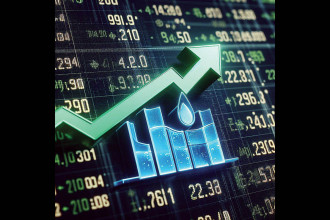
The recovery in commodity prices that commenced in early 2016 and paused momentarily in 2017, is likely to continue in 2018. The underlying demand and supply factors are increasingly positive in the key metals, energy and agricultural commodities. The US Dollar along with global inflation has weakened with time. The commodity market remained firmly trapped in the ‘out of fashion’ mode in the sentiment cycle characterised by plummeting investor positioning and fund closures. With improving market outlook slowly gathering pace, it is that time of the year to introspect the probable trends in 2018.
Vivek Risal is associated with Mercantile Exchange Nepal Limited in the capacity of Manager in Research and Development Department. He can be contacted at r&[email protected]
PRECIOUS METALS
The recent pause in the weakening of the US Dollar, a trend which transpired mostly in 2017, explains the recent weaknesses in commodities in general. However, gold prices will be affected the most. On the other hand, geopolitical risks will inevitably make a comeback with places like North Korea, Iran and Saudi Arabia again in the radar. The impending risks will offer some support for gold next year too. Against the backdrop of increasing financial market volatility, gold and silver’s solid track records as liquid and transferable tangible assets may come increasingly onto investor radar. Also, should the global equity markets weaken in 2018, gold could also stand to benefit with investors parking their cash in the bullion. Apart from gold and silver, the other twless affluent precious metals i.e. platinum and palladium, grabbed headlines. While the prices of platinum declined in 2017, palladium took the cake by skyrocketing towards the highest since 2001. The fundamental driving factors are set to continue with palladium benefiting from perpetual robust sales of diesel cars in 2018. While the bullion has made a comeback in last two previous years, the metals remained under-invested in 2017.BASE METALS
Among all commodity classes, industrial metals remained the most positive with copper leading the way. The upbeat demand forecasts in China along with the lowering supply had lifted the base metals to positive territory. Copper is likely to benefit from the tight supply which is set to continue next year too.ENERGY
For energy products, the outlook has already improved. The key risks for the prices of crude oil now appear skewed heavily to the upside. On the supply front, the production continues to underperform expectations in a number of oil-producing nations, for the first time as long as one can remember. Analysts opine that crude oil inventories will decline sharply in 2018. On the other hand, demand remains impressively strong with major economies accelerating their usage of energy products with growth trajectory. However, market pundits will keep an eye on OPEC’s agendas and decisions coupled with the ever inclining shale output and geopolitical zones like the Middle East and Venezuela to determine potential trends in the future. The power of OPEC’s decision had fuelled a rally but has also paved the way for USA’s increasing exploration and production companies. The outlook for prices of natural gas remains bullish in 2018. However, the consensus view is that the current low prices are the new norm and it will stay at this level for the next few years. Given its use in the peak winter season in the US over the next few years, analysts opine that due to the undersupply in the market, the prices will tread higher in order to react to the supply deficit.AGRICULTURE
JP Morgan states that agro-markets could do well in 2018 after a below expected showing in 2017. The fundamental factors will remain supportive for key agro-markets. Brazil should be supportive of feed grain which leads to the consumer recovery and the sugar demand will likely incline through 2018. Cotton and corn markets are most likely to tighten due to the developing Chinese imports and La Nina related production problems respectively. The wheat markets looked to have formed a market bottom and likewise, many soft agro-commodities are likely to be supported by long-term structural demand growth. The prices are forecasted to incline due to poor weather conditions and falling yields leading to supply vulnerabilities. In conclusion, there is a reasonable chance that the commodity market will drive out gains in 2018 after a forgettable year in 2017. The appealing mix of recovering commodity prices coupled with cheap valuations will provide traders with an excellent opportunity to diversify the risk and seek protection from the ever-increasing inflation. Wishing you all a wonderful and prosperous 2018!Vivek Risal is associated with Mercantile Exchange Nepal Limited in the capacity of Manager in Research and Development Department. He can be contacted at r&[email protected]
Published Date: January 19, 2018, 12:00 am
Post Comment
E-Magazine
RELATED Commodity Perspective





